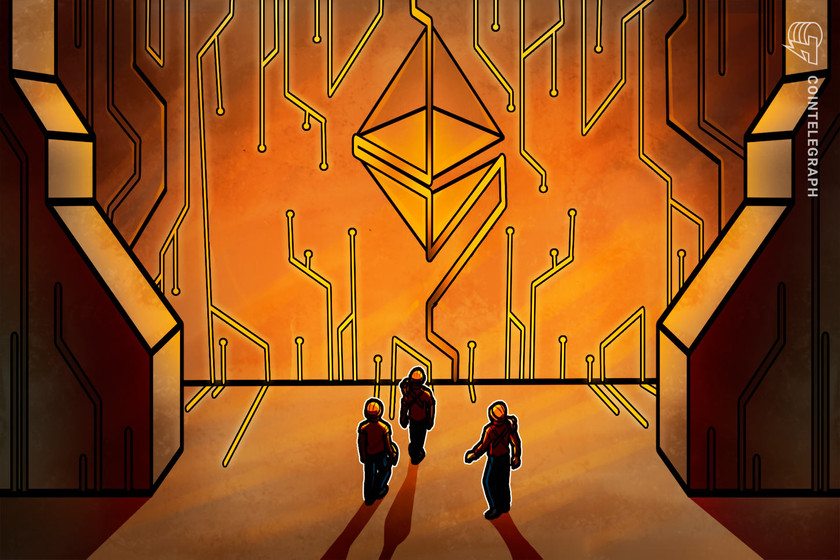Rumor has it that Dogecoin could shift to proof-of-stake — What does that mean for miners?


Dogecoin shifting to proof-of-stake would be good for the environment, but what impact would it have on miners and ASIC manufacturers?
There are rumors that Dogecoin could switch from proof-of-work to proof-of-stake (PoS).
Do I know if Dogecoin is switching to PoS?
No.
Do I think it’s going to PoS? Probably not.
But I love the “what if” game.
As a person who works in the crypto mining industry, I do my best to gauge where the market and mining industry are going, along with how that could play out. If Dogecoin makes a change to PoS or some other change to how new blocks are created, it would have massive ramifications for the mining industry.
Here’s a look at a few options and their effects.
Scrypt mining could be devastated
I’m not going to debate whether or not Dogecoin will or should switch to PoS. While it’s hard to determine if the recent rumors about the potential for a switch are true or not, they were enough to have Bitmain supposedly pause Litecoin (LTC) and Dogecoin (DOGE) miner manufacturing.
The larger question in my mind is, What happens to miners if Dogecoin switches to PoS?
First, Scrypt mining would be devastated. DOGE accounts for over 60% of the revenue with Scrypt mining. Take it away, and every L3+, every LT6 and every Mini Doge Pro — literally almost every non-L7 miner not connected to $0.04-per-kilowatt-hour electricity — would need to be unplugged immediately.
Network difficulty would likely bounce all over the place for some time, while miners with older equipment struggle with the decision to keep their ASICSs on or turn them off. The apex Scrypt miner, Bitmain’s Antminer L7, would see its profitability reduced by nearly 75%, reducing profits to a whopping $4.83/day at $0.05/kWh.
What about the miners that don’t have an industrial electric rate? At $0.10/kWh, the L7 9050M, which sold for around $9,000 a few weeks ago, would earn you $0.72/day.
Yikes!
A drastic change like this would result in those who had recently purchased an L7 being very unlikely to ever recover their investment, let alone generate any profits.
ASIC manufacturers would be forced to drop prices, further impacting their bottom line
The vastly reduced profitability would inevitably lead to the price of the L7 dropping quicker than it did during the COVID-19-induced crypto crash. Pricing miners solely by their expected ROI time, at $5 a day profit, miners would be looking at the L7 having a price tag between $1,825 (12-month ROI) and $2,737.50 (18-month ROI). This reflects a minimum price reduction of nearly 70%.
How quickly would Bitmain react? Would they gradually reduce prices week after week, similar to what Goldshell has done with many of its miners over the past few months? This strategy repeatedly left a sour taste in the mouths of customers as they watched the price of the miner they just spent thousands of dollars on being slashed over and over again.
Or would Bitmain come out and continue their recent trend of pricing miners fairly?
ASIC resellers would also bear the brunt of the negative consequences connected to a PoS shift by Dogecoin. Many L7 miners are suppliers, and retailers sitting on that would instantly need to be marked down by a substantial amount. However, based on their recent history of price-gouging customers, like charging $60,000 for a KD6 that is barely worth over $1,000 today, it’s doubtful many tears would be shed for them.
Many home miners would flood eBay and similar platforms with Scrypt miners. It would be a race to the bottom as desperate miners attempt to recoup whatever value is left in the hunk of metal that can now only be used as a doorstop or display piece if one is desperate.
Litecoin mining would survive. Those L7s would stay on because they’d still be somewhat profitable, and there really wouldn’t be another choice. It’s doubtful that the market would see a new Scrypt miner that could challenge the L7 to be developed anytime soon unless there already is a more efficient Scrypt miner in development. There are some rumors that Bitmain is working on a miner that would surpass the L7.
That’s a lot of disruption from the move to PoS, and we’ve only looked at one aspect of the crypto ecosystem. Numerous other questions and scenarios would need to be considered.
What would happen to network security?
Would the yield from staking cause DOGE to eventually be labeled a security?
Would Dogecoin be lauded for the change, or would the masses flee from what is now the second-largest PoW coin by market cap?
Now for my favorite what if. This option is unlikely, maybe even impossible, but there are different ways it could play out.
What if Dogecoin breaks away from merge-mining with LTC and creates its own mining algorithm?
Related: Dogecoin Foundation announces new fund for core developers
Innovation and competition are healthy for every industry
What if there’s a GPU mining renaissance? After the Ethereum Merge event, there’s a ton of really cheap GPUs available on the market. Those would get expensive really quickly. Mining purists would rejoice as they build their own mining rigs while trying to figure out how much DOGE they can stack. It really would be cool to see, but it wouldn’t last. The big three manufacturers — Bitmain, Goldshell and iBelink — would scramble to be the first to market with an ASIC miner.
Eventually, they’d each have at least one ASIC miner on the market, and naturally, they’ll get more powerful and more efficient over time. The jumps and increases in difficulty would be ridiculous, and just like with Bitcoin (BTC), it would eventually no longer be profitable to mine DOGE with GPUs. But it could also open the door to something the ASIC manufacturing market desperately needs: competition.
What if, following the short-lived GPU mining renaissance, a door opens for another manufacturer or manufacturers to enter the market? Currently, Bitmain, Goldshell and iBelink are the “big three,” and it’s really Bitmain that has a total stranglehold on the market. So, while it’s likely Bitmain would come out on top, what if there’s someone out there who can be first to market and maintain that lead and establish itself as a credible and reliable ASIC manufacturer?
What if that company decided to branch out into other miners and offer them fair prices? To be fair, we do have to commend Bitmain again for the pricing on its recent rollout of industry-altering miners. Reseller markups are still an issue, but that’s another topic. Perhaps this “new” competitor would adhere to the mantra that customer service actually matters. If customers could get over the reliability concerns and the company built a good product, that could happen. Admittedly, that’s a lot of what-ifs.
Alternatively, there’s a money-grab scenario for Dogecoin. The project could go directly to Bitmain, Goldshell and iBelink and say, “We’re creating our own mining algorithm, and we’ll give it to you and you alone. How much money will you give us?”
What would Goldshell pay to bring life back to a company that has taken a series of body blows from the recent altcoin miners released by Bitmain? Or would iBelink go all out to win the rights to make the miner? IBelink just released a new BM-K3 Kadena miner that boasts 70 terahashes — a nearly 75% increase over the next closest model — and it can’t celebrate because Bitmain is about to trump that with the new KA3 that brings 166 THs. In the case of a Dogecoin offer to ASIC manufacturers, how much would Bitmain pay to maintain its market dominance?
No change could be a good thing
What if DOGE chooses to simply continue with Scrypt mining?
The status quo is not that exciting, but it seems to be the most likely outcome. Sure, there may be some changes that will pass a vote, but Dogecoin will most likely continue to be merge-mined with LTC on the Scrypt algorithm.
Bitmain is likely to continue pushing out L7 inventory before launching a more efficient Scrypt miner later this year AND Goldshell will launch a Mini Doge Pro 2 for home miners that will essentially be two Mini Doge Pros in one box. The upcoming LTC halving, along with the more efficient miners, will probably push several older models to shut down for good.
Crypto markets will go up, and crypto markets will go down. There will likely be some other crypto scandal that no one sees coming that will look incredibly obvious in hindsight. The sun will come up, and the sun will come down. Of course, most suppliers and especially resellers will continue to mark up miners and squeeze everything they can out of regular customers.
It’s impossible to know what’s going to happen with Dogecoin in the future, but crypto is one of the few industries where anything can happen on any given day.
Regardless of whether Dogecoin switches to PoS, the crypto mining landscape has always changed rapidly, and Scrypt mining is no different.
Change is coming.
The views, thoughts and opinions expressed here are the authors’ alone and do not necessarily reflect or represent the views and opinions of Cointelegraph.
This article does not contain investment advice or recommendations. Every investment and trading move involves risk, and readers should conduct their own research when making a decision.





























